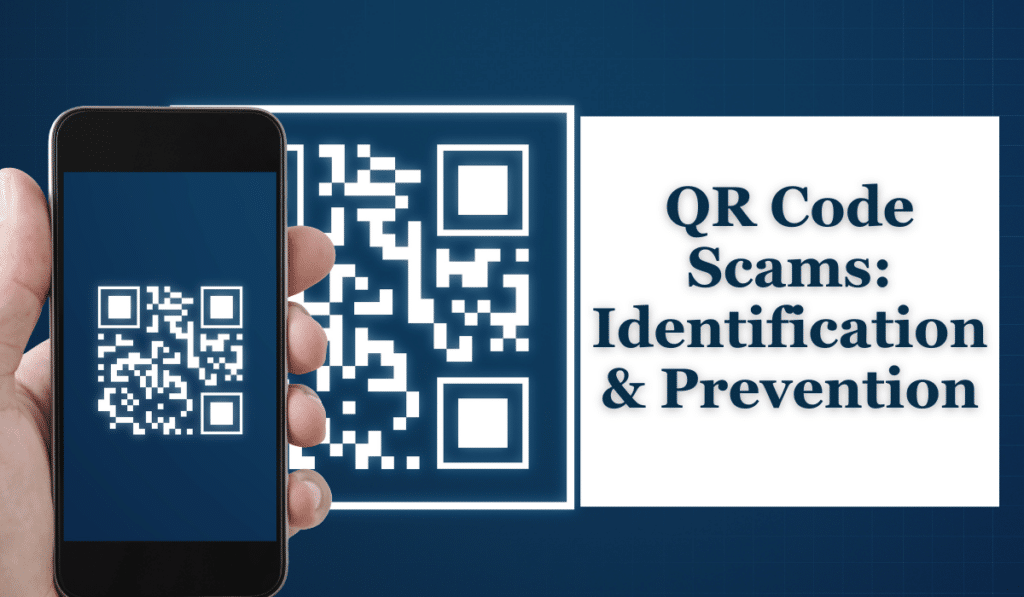
QR codes, short for Quick Response Code, have become an integral part of our lives, a simple way of connecting physical and online experiences. And with that convenience comes an opportunity for cybercriminals. These deceptive practices exploit the unsuspecting user, leading to potential security breaches and financial losses. Are you familiar with what QR code scams are and how to identify them? Here are some crucial tips to help you avoid falling victim to these fraudulent activities.
Understanding QR Code Scams
QR code scams involve the manipulation of legitimate QR codes to redirect users to malicious websites, phishing pages, or other fraudulent activities. Cybercriminals use various techniques to trick users into scanning these codes. These tactics can range from disguising them as legitimate promotions to embedding malicious links within seemingly harmless codes.
What to Look For:
- Unusual Source: Be cautious when scanning QR codes from unknown or suspicious sources. Stick to codes provided by reputable entities and avoid those that you receive through unsolicited messages or emails.
- Overly Complex URLs: Legitimate QR codes often lead to concise and straightforward URLs. If the destination URL looks unusually complex or contains random characters, it might be a red flag.
- Mismatched Branding: Scammers often create fake QR codes that mimic the branding of well-known companies or organizations. Double-check for any inconsistencies in colors, logos, or overall design.
- Lack of Encryption: Legitimate QR codes from reputable sources often use encryption to secure the data. If you notice a lack of encryption, it could indicate a potential scam.
- Too Good to Be True Offers: Scammers often lure victims with too-good-to-be-true offers. If the QR code promises unbelievable discounts, prizes, or rewards, exercise caution before scanning.
Avoiding QR Code Scams:
- Verify the Source: Before scanning any QR code, ensure it comes from a trusted source. If in doubt, contact the company or organization directly to verify the legitimacy of the code.
- Use a QR Code Scanner with Security Features: Choose a reputable QR code scanner app that includes security features. Some scanners can detect and alert users about potentially harmful codes.
- Check the URL Before Clicking: If the QR code leads to a website, manually type the URL into your browser to verify its authenticity. Do not click on suspicious links.
- Enable Multi-Factor Authentication (MFA):
- What is MFA? Multi-factor authentication adds an extra layer of security by requiring users to provide multiple forms of identification before accessing an account or system.
- Importance of MFA: Enable MFA on your accounts to protect them from unauthorized access, even if QR code scams or phishing attempts are successful in obtaining your login credentials.
Yes, QR codes offer convenience, but it’s crucial to stay vigilant against potential scams. Understanding the signs of QR code scams, verifying sources, and implementing security measures like Multi-Factor Authentication, and as always, ongoing training can help users to stay informed and secure!
The post QR Code Scams: Identification and Prevention appeared first on Breach Secure Now!.




